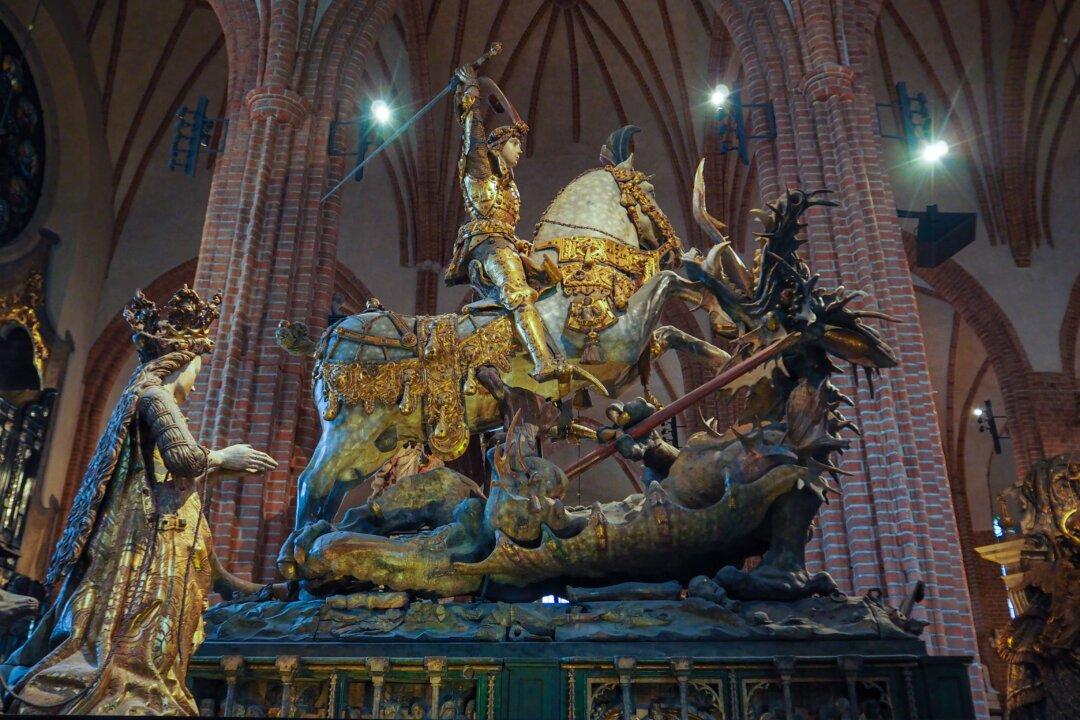Around 1543, 14-year-old Taddeo Zuccaro left his family home in Urbino, Italy, and headed off to Rome to immerse himself in art and to seek out artistic training. In four short years, at just 18 years old, Zuccaro’s murals on the façade of Palazzo Mattei made him the most talked about fresco decorator in Rome—and that was before he finished them. Even Michelangelo came to see them.
At the height of his fame, Zuccaro had a studio of artists working on the Farnese family’s frescoes at Villa Farnese in Caprarola, central Italy. But Zuccaro’s fame didn’t come overnight; it came from his resilience, resourcefulness, and diligent practice of art.
The Artist’s Forbearance
In contrast to Venice and Florence, Rome didn’t have established studio apprenticeships, so aspiring artists like Taddeo Zuccaro had to find jobs as artist assistants, which often meant doing domestic chores, too. Zuccaro had one advantage, or so he thought. His cousin, the painter Francesco il Sant’Angelo worked in Perino del Vaga’s studio, a painter in Rome. And so, with a letter of introduction, he set off to see his cousin, only to be turned away by him. Federico depicted the scene in his drawing “Taddeo Rebuffed by Francesco il Sant'Angelo,” as poor Zuccaro trudges off in tears.
But fate intervenes. Walking away, Zuccaro sees a mural on a building’s façade that had been painted by the celebrated artist Polidoro da Caravaggio. Zuccaro then becomes determined to learn.

In some drawings, Federico showed his brother working as an assistant for various minor artists. In the drawing “Taddeo in the House of Giovanni Piero Calabrese,” Zuccaro is grinding pigments under the watchful eye of the artist’s wife. The detailed scene shows how hard life must’ve been for the young artist. Stored up high on a pulley and rope is bread in a basket along with a bell to prevent the youngster from stealing the food. In another scene, in the left corner of the drawing, Calabrese is keeping an eye on Zuccaro to stop him from copying a drawing by Raphael that Calabrese owns, perhaps for fear of his assistant outshining him.

Zuccaro worked all day. With no time to draw during daylight hours, and no oil for light, he’d often catch the moonlight and work late into the night. Or he’d rise early with the sun to catch the first rays of daylight. An endearing image (“Taddeo Drawing by Moonlight in Calabrese’s House”) sees Zuccaro by a moonlit window. He’s tossed off his bedcovers and hurriedly leaped out of bed, grabbing only one slipper to wear. He’s disheveled but that doesn’t matter: He’s drawing.

Like many artists, Zuccaro set about copying great art. In another moonlight drawing (“Taddeo Copying Raphael’s Frescoes in the Loggia of the Villa Farnesina”), Zuccaro sits under the loggia at the home of banker and art patron Agostino Chigi, to copy Raphael’s frescoes. Zuccaro often had nowhere to sleep and would snooze under the loggia (as shown in another scene in the same drawing). Another of Federico’s drawings, “Taddeo in the Belvedere Court at the Vatican,” shows his brother sitting between ancient art sculptures, the “Apollo Belvedere” and the “Laocoön,” drawing the latter.

Zuccaro’s hard work paid off. He began working on commissions with his cousin, Francesco il Sant’Angelo, who had originally spurned him. Francesco recommended Zuccaro paint a mural on the façade of Palazzo Mattei, owned by nobleman Jacopo Mattei, and his cousin convinced Mattei to let the youngster complete two panels to prove his work.
That worked. Even before Zuccaro completed the murals, artists came to admire them. In the drawing “Taddeo Decorating the Façade of the Palazzo Mattei,” we see Michelangelo arrive on horseback, and artist and art historian Giorgio Vasari in conversation on the righthand side of the drawing. Zuccaro’s much admired murals established his fame.

Experts believe that Federico made the drawings as designs for ceiling frescoes, which explains their distinctive shape. These designs may have been destined for his Palazzo Zuccari, which he bequeathed to the poor, struggling, young artists at St. Luke’s Academy.
All 20 of Federico’s celebrated series, including four allegorical drawings, are on display in “The Lost Murals of Renaissance Rome” exhibition at the Getty Center in Los Angeles. The exhibition focuses on the murals that once decorated Rome’s important buildings and includes mural designs by artists from the Getty’s collection, including Taddeo Zuccaro.
In Taddeo Zuccaro’s story we can see the strength of the human spirit to overcome the odds and do the hard work needed to fulfill one’s dreams. Tragically, Zuccaro died when he was 37 years old, the same age as fellow Urbinate Raphael. Federico Zuccaro went on to be possibly the most famous living painter of his time. But that’s another story.






